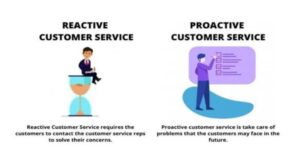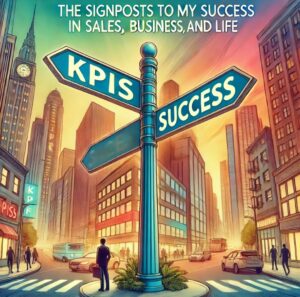
While you may not relish the idea of making hundreds of cold calls, by following this process you will in effect be testing your advertising or direct mail headline.
By now you have identified what problem you solve; who has the problem and who can afford to have you solve it. The next task is to plan a calling script to test the validity of your offer.
Let’s say your product is a range non-toxic hair products and your target market is ladies hairdressers. The problem you solve is the skin irritation and eczema that some chemical based hair products cause both the hairdresser and the customer.
Your call to the salon owner might go like this…
“Hello Mary, It’s Tony from Acme All Natural Hair Products (exchange pleasantries).
“Mary, my call is to establish if any of your staff or customers experience adverse skin reactions to the chemicals in some hair treatment products?”
(Mary is highly likely to say Yes)
“Mary, Acme provides a wide range of all natural hair products from shampoos and conditioners to dyes which women who suffer from skin irritations from other products find they can safely and happily use. I know you may have a commitment to a specific range of products already, however would it be valuable to you to have an alternate range available for those women who have problems with your other range?”
Assuming Mary agrees, all we have to do is arrange the next step which may be a sales visit or the delivery of a sample pack.
Let’s analyse the call:
The opening line asks a very leading closed question, one which Mary can really only answer Yes or No. We have asked Mary if her salon ever has the problem we solve. We haven’t asked if she would like to see a new range of hair care products which would likely get a No answer as Sue probably gets a call like that every week.
When Mary acknowledges the problem, the solution Toby offers delivers a benefit and answers the most likely rebuttal Mary could have; that she already promotes a specific brand of product. Tony does that by pointing out that his range would be stocked in addition to the current range, not instead of it. This tells Mary that Tony is not trying to get her to change brands.
This simple script can easily be rewritten for other products and industries.
—
Coming from a background in sales, there is one thing that always bothered me: Seeing someone with an excellent product or service who is struggling to sell, while someone with an inferior product is selling their offer like hotcakes. This is often because the latter has the key trait of being able to sell themselves.
Even if you have the best product or service in the market offered at a competitive price, it won’t matter much if you can’t sell it and yourself. Here’s how you can get better at this crucial skill:
Have an amazing product or service.
It might seem like this goes without saying, but the product or service you’re selling actually has to be high-quality. This is important for several reasons.
Build confidence in yourself.
Once you know that you’re selling something amazing, it will be much easier to be confident in your sales calls and meetings. Remember that in the end, selling is all about making a human connection. Not even the best product in the world can sell itself. The way you present it to someone makes all the difference between a major flop and a bestseller.
Tell a convincing story.
The best way to sell yourself is to tell a story — but not just any story. As author and leadership expert Simon Sinek said in a TED Talk, “People don’t buy what you do; they buy why you do it.” So reverse the order of the information you deliver; don’t start with profit.
For example, if you’re selling accounting software for small businesses, don’t base your marketing and sales pitch on the fact that you sell the best accounting software there is. Base it around the fact that you want to help small businesses that lose fortunes in time and money every year by keeping their own books. Always start with the client and the problem you’re solving for them.
Cut the fluff.
A quote famously attributed to Albert Einstein sums up well how you should discuss your product or service: “If you can’t explain it to a six-year-old, you probably don’t understand it yourself.” Consider your clients six years old. That’s how you should position yourself.
While using fancy jargon and complex industry terms might impress a client or two, you’ll lose the majority of your audience. Simplifying complex terms is an art form that takes time to master. Your goal is not to sound smart, but to get the client to understand you and why they need to buy from you. The simpler language, the better.
Be a walking a FAQ page.
One of the most difficult parts of sales calls and meetings is the questions you get after your pitch. Knowing what questions you can anticipate can make a major difference in how you’re perceived and whether the meeting ends up with a sale.
Unfortunately, there are no shortcuts here. I know 99% of the questions someone can ask me because I’ve been selling the same product for a while, but if you’re new, you’ll just have to rely on your intuition. There are always questions you cannot predict. However, you should be able to anticipate the most common questions after a while.
Sell what the client is actually looking for.
One of the biggest lessons in sales is that people don’t really buy what you’re trying to sell them. For example, if you run a social media marketing agency, you might have a prospective client who is interested in your services. On the discovery call, however, you could find out that they want to outsource social media marketing because they want to spend more time with their family.
When you present your offer, focus on the thing they really need. Offer to give them more time with their family by taking a chunk of work off their plate. Don’t be afraid to reuse their exact words. You will come off as more empathetic, and you’ll get one step closer to winning their business.
At the end of the day, sales is all about making a connection with people. You need to be able to sell yourself, as that’s how you can earn consumers’ trust. And once you have trust, you can sell your product successfully.
Please Visit for more information: Links:







